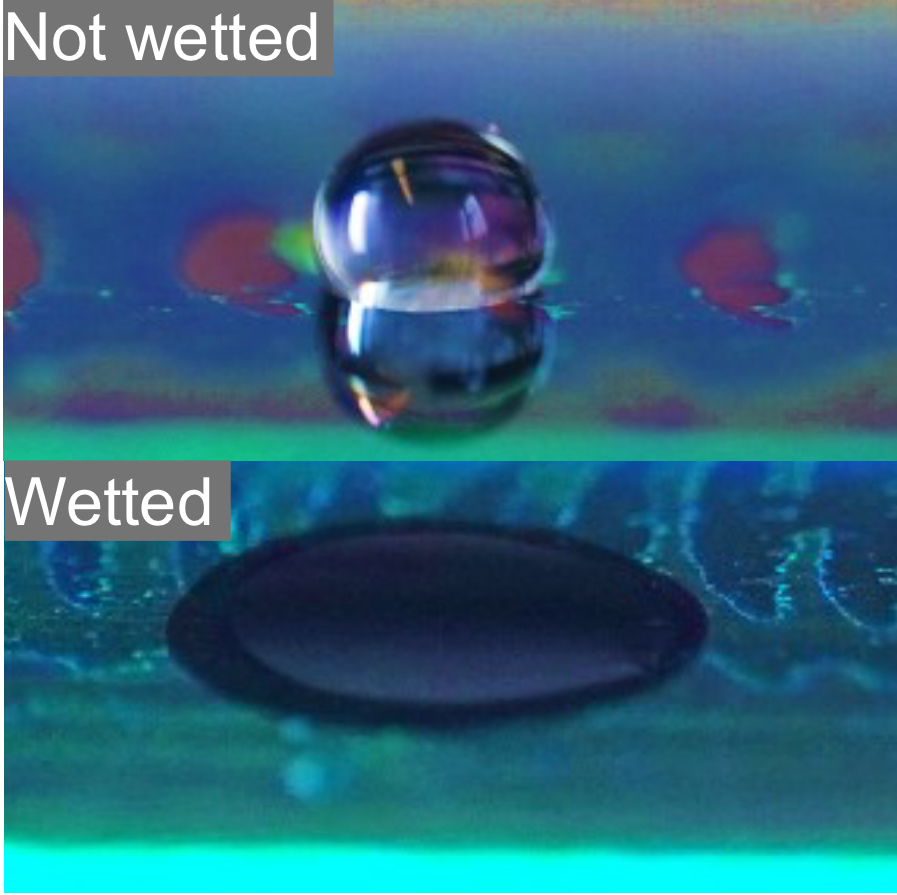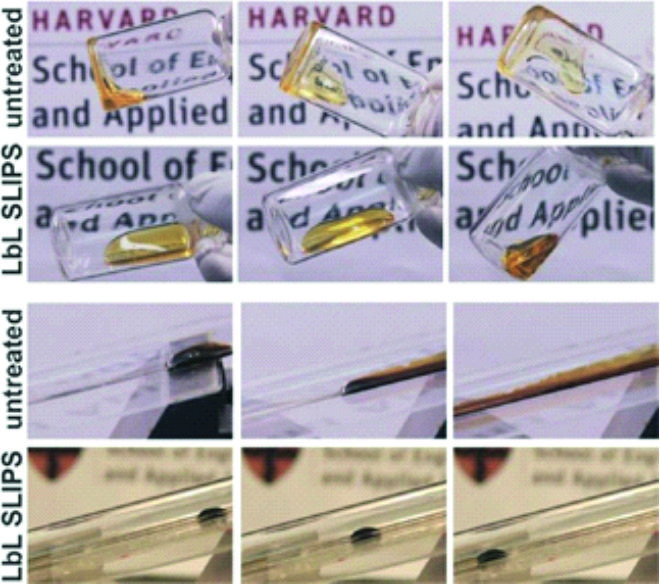Wetting and repellency
Inverse opals as colorimetric sensors
The ability to detect dissolved species in liquids is crucial for applications ranging from healthcare diagnostics to environmental monitoring. Traditional methods often require complex, resource-intensive setups, limiting their accessibility. Inverse opals, a class of nanoporous materials characterized by their 3D interconnected, periodic pore structures, offer a cost-effective and straightforward alternative as sensor materials for on-site applications. They exhibit vibrant structural coloration which disappears upon liquid infiltration into the pores, providing a clear and unambiguous visual readout.
So far, wetting transitions in wetting-based inverse opal sensors have relied on the physical properties of liquids, such as surface tension. However, this approach cannot detect soluble species within the same liquid, as most analytes do not significantly alter surface tension. Our research focuses on a different strategy: inducing wetting transitions through changes in surface chemistry rather than the liquid itself. By functionalizing the pore surfaces with selective recognition units, the binding of an analyte triggers a change in wettability, allowing the liquid to penetrate previously unwetted pores. This enables inverse opals to act as autonomous sensors for detecting dissolved species with high specificity and simplicity.


Key Related Publications
Giulia Magnabosco, Maria Ochs, Natalie Bonakdar, Laura Czerwenka, Annette Andrieu-Brunsen, Nicolas Vogel
Inverse opals with reactive surface chemistry as sensors for aqueous pollutants
Chem Comm 2024, 60, 7594 – 7597
Y. Galvan, K. R. Phillips, M. Haumann, P. Wasserscheid, R. Zarraga and N. Vogel
Ionic liquid-infused nanostructures as repellent surfaces
Langmuir 2018, 34 (23), 6894-6902
Key Persons
Self-Cleaning Surfaces
Fouling of surfaces can severely compromise functionality,increase full consumption in marine industries, or risk bacterial infections in the biomedical field. Strategies to mitigate such surface contaminations often often use biomimetic approaches, based, in particular, on the Lotus plant or the the slippery rim of the Pitcher plant.
We focus on the bioinspired development of such self-cleaning surfaces with a focus on sustainable production processes and are exploring their efficiency in preventing biofouling in a range of scenarios.

Key Related Publications
Teresa Walter, Tamara Hein, Matthias Weichselgartner, Kirsten Wommer, Martin Aust, Nicolas Vogel
Dispersion-Based, Scalable Fabrication Of Repellent Superhydrophobic And Liquid-Infused Coatings At Ambient Conditions
Green Chemistry 2022, 24, 3009 – 3016
S. Amini, S. Kolle, L. Petrone, O. Ahanotu, S. Sunny, C. N. Sunanto, S. Hoon, L. Cohen, J.C. Weaver, J. Aizenberg, N. Vogel, and A. Miserez
Preventing mussel adshesion using lubricant-infused materials
Science 2017, 357, 668
S. Sunny, G. Cheng, D. Daniel, P. Lo, S. Ochoa, C. Howell, N. Vogel, A. Majid and J. Aizenberg
Transparent Antifouling Material for Improved Operative Field Visibility in Endoscopy
PNAS 2016, 113, 11676